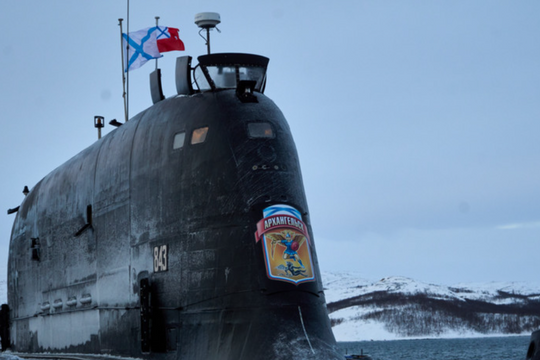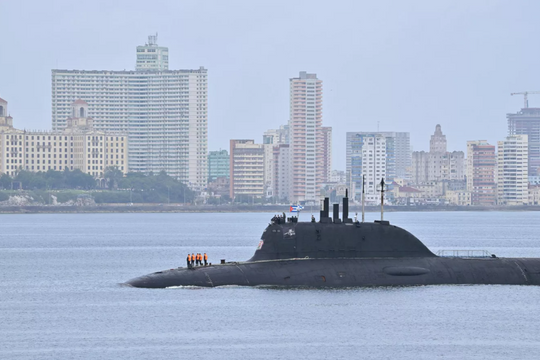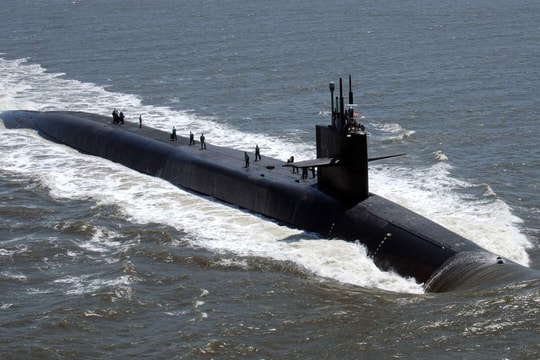Shocking revelations about Soviet submarine detection technology
While the Americans mistakenly thought their sonar technology was the best in the world, the Russians had something much more frightening.
In the 1980s, the Soviet Union announced a confrontation that many military experts thought was unthinkable. When a Project 671 nuclear submarine (NATO designation Victor) codenamed K-147 of the Soviet Navy secretly tracked an American nuclear submarine for 6 days without being detected.
American observers at the time believed that the Soviet Union lacked effective sonar technology that could track sophisticated American nuclear submarines. However, a recently declassified CIA report shows that the K-147 tracked American submarines without using sonar.
The CIA's revelations shocked the Western intelligence community. The report, titled "Soviet Anti-Submarine Warfare Capabilities in 1972," was declassified this summer. It revealed a large part of the technology the Soviets had developed that had never been revealed before. While NATO focused its efforts on sonar development, the Russians were creating something completely different.
Why is sonar the "king of underwater"?
Seawater blocks radio waves. So radar, while very effective on the surface, is completely useless underwater. Also, sound waves travel better underwater than radio waves, and sonar was used to detect submarines as early as the first years of World War I.
Sonar, or hydroacoustic positioning system, has two basic types, active and passive sonar. Active sonar emits sound waves to find underwater targets. It is likened to a type of underwater radar. However, using active sonar also reveals the location of the submarine's transmission.
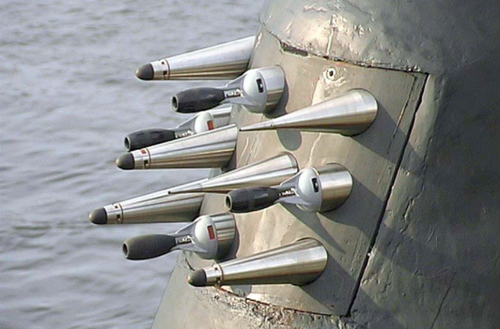 |
| Close-up of strange equipment on a Soviet submarine. Photo: Popularmechanics. |
Passive sonar uses ultra-sensitive acoustic devices to detect noise emitted by submarines and propellers. Passive sonar can detect enemy submarines without revealing their location. Depending on actual conditions, sonar can detect submarines from dozens of kilometers away.
During the Cold War, the United States and its allies developed so many sophisticated and effective sonar systems that other solutions were abandoned. For decades, non-sonic underwater search technologies were considered ineffective in terms of range and reliability compared to sonar.
A 1974 intelligence conclusion stated that “It appears that any of the proposed solutions (no specifics about each solution and they have not been declassified) would be unable to detect submarines at a distance.”
However, in the Soviet Union, it was a different story. The Soviet Union was said to have had difficulty developing sophisticated sonar. Instead, they developed a strange surveillance device to detect submarines and it was called the SOKS Oscillator Detection System.
The Mystery of SOKS
Why Russian submarines can detect American submarines without using sonar is declassified in a strange device called SOKS, also known as Oscillation Detection System (System Obnarujenia Kilvaternovo Sleda - SOKS).
The device is installed on attack submarines, with the function of searching and following the wake that the submarine leaves behind. The SOKS complex has actually appeared in photos of Russian submarines, looking like large spikes or warheads attached to the outside of the hull.
Its working principle is to take advantage of the fact that submarines emit a series of chemicals such as zinc and nickel while operating. Although only in extremely small amounts, it can still be detected with sophisticated measuring equipment.
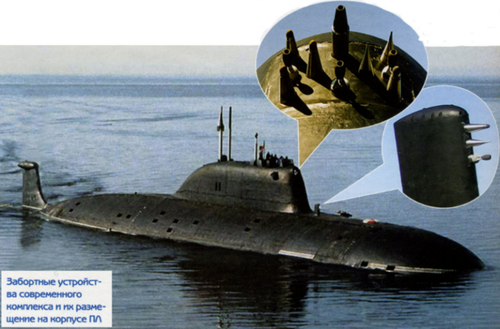 |
| SOKS sensor installation location on Akula-class nuclear attack submarine. Photo: Popularmechanics. |
In addition, nuclear reactors require huge amounts of water for cooling. Some tests have shown that the temperature of the water discharged from submarines can be 10 degrees Celsius higher than the surrounding environment.
The CIA report stated that "A navigation system based on these techniques could detect the remains of a submarine hours in advance," and that "the Soviets had success using this technology to locate their own submarines."
If SOKS is really as miraculous as what is said above, the former Soviet Union and Russia today would have possessed unique technology, helping them detect submarines without using sonar.
Jacob Gunnarson, a veteran defense analyst, said the sensor system could work, but it would be difficult to confirm whether the data collected was from a submarine. However, the sensor system would produce a stream of data for calculation. However, the computing power of Soviet supercomputers in the 1970s was not highly appreciated.
Today, Russia has successfully developed supercomputers that can help improve the computing power and thereby enhance the power of the SOKS system. Since 1972, US intelligence has soon realized that radioactive traces can be a way to reveal US submarines.
That is why it took 45 years for this document to be declassified. Recent scientific reports show that China is looking for new technologies to detect submarines instead of relying on sonar. Even the US is looking for such technologies. That said, the technology to detect oscillation waves is not as bad as many people thought.
According to Kienthuc.net.vn
| RELATED NEWS |
|---|



